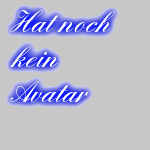Das wäre dann das nächste.

U-2s, UFOs, and Operation Blue Book
From Gregory W. Pendlow and Donald E. Welzenbach. The CIA and the U-2 Program, 1954-1974. Central Intelligence Agency, 1998, pp. 72-73.
The following is the full text of the portion of the book relating to UFOs. This publication can be purchased from the National Technical Information Service, 5285 Port Royal Road, Springfield VA 22161. Telephone (703) 605-6000 or 1-800-553-NTIS.
High-altitude testing of the U-2 soon led to an unexpected side effect--a tremendous increase in reports of unidentified flying objects (UFOs). In the mid1950s, most commercial airliners flew at altitudes between 10,000 and 20,000 feet and military aircraft like the B-47s operated at altitudes below 40,000 feet. Consequently, once U-2s started flying at altitudes above 60,000 feet, air- traffic controllers began receiving increasing numbers of UFO reports.
Such reports were most prevalent in the early evening hours from pilots of airliners flying from east to west. When the sun dropped below the horizon of an airliner flying at 20,000 feet, the plane was in darkness. But, if a U-2 was airborne in the vicinity of the airliner at the same time, its horizon from an altitude of 60,000 feet was considerably more distant, and, being so high in the sky, its silver wings would catch and reflect the rays of the sun and appear to the airliner pilot, 40,000 feet below, to be fiery objects. Even during daylight hours, the silver bodies of the high- flying U-2s could catch the sun and cause reflections or glints that could be seen at lower altitudes and even on the ground. At this time, no one believed manned flight was possible above 60,000 feet, so no one expected to see an object so high in the sky.
Not only did the airline pilots report their sightings to air-traffic controllers, but they and ground- based observers also wrote letters to the Air Force unit at Wright Air Development Command in Dayton charged with investigating such phenomena. This, in turn, led to the Air Force's Operation BLUE BOOK. Based at Wright-Patterson, the operation collected all reports of UFO sightings. Air Force investigators then attempted to explain such sightings by linking them to natural phenomena. BLUE BOOK investigators regularly called on the [Central Intelligence] Agency's Project staff in Washington to check reported UFO sightings against U-2 flight logs. This enable the investigators to eliminate the majority of the UFO reports, although they could not reveal to the letter writers the true cause of the UFO sightings. U-2 and later OXCART flights accounted for more than one-half of all UFO reports during the late 1950s and most of the 1960s.
Definitions of terms:
BLUE BOOK - From 1947 to 1969, the US Air Force investigated unidentified flying objects under Project BLUE BOOK. The project, headquartered at Wright-Patterson Air Force Base, Ohio, was terminated 17 December 1969. Of a total of 12,618 sightings reported to BLUE BOOK, 701 remained "unidentified."
OXCART - The A-12 OXCART was developed by the Central Intelligence Agency as a successor aircraft to the U-2. OXCART saw little operational use before the program was canceled in 1968 after the US Air Force deployed a fleet of similar aircraft, a military variant of the A-12 called the SR-71.
UFO - Unidentified flying object.
U-2 - A high-altitude single-engine reconnaissance aircraft known as the CL-282, better known as the U-2, was developed in 1954-55 by the Central Intelligence Agency and Lockheed Corporation to collect intelligence over communist bloc countries.










